On October 19, Mikhail Petrovich Simonov, General Designer, Hero of Russia, Lenin Prize laureate, would have turned 95 years old
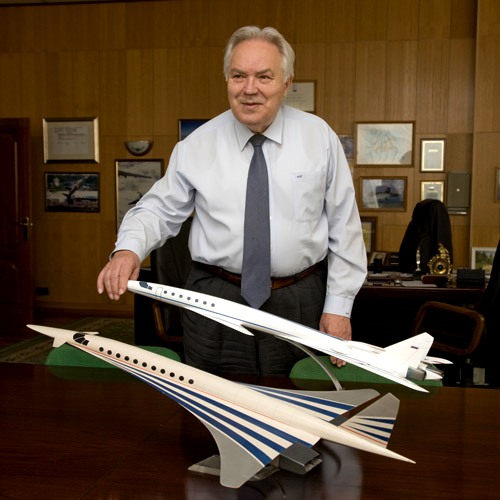 |
| Mikhail Petrovich Simonov. |
| Source: Valery Ageev |
His whole life was inextricably linked with aviation, and he spent almost 40 years working at the Sukhoi Design Bureau. With his participation, and then under his leadership, the world's best combat aviation complexes Su-24, Su-25, Su-27, Su-30, Su-33 and Su-34 were created. He led the creation of a family of aerobatic sports aircraft Su-26, Su-26M, Su-29, Su-31, which became the best in the world in their class.
His contribution to the development of international cooperation was invaluable. The real breakthrough in the 90s was the military-technical cooperation initiated by Simonov with China, which allowed not only the Design Bureau, but also many experienced and serial enterprises of the aviation industry to survive and actively develop during this period.
Mikhail Petrovich Simonov belonged to the galaxy of those people who are commonly called "outstanding designers". There is no area in the aircraft industry where his talent, ideas, and foresight have not left their bright mark.
His design revelations became a kind of vector for numerous students and followers, indicating the only right path in exploring the unknown, the unknown, in conquering new scientific and technical heights previously inaccessible to man. Mikhail Petrovich founded a scientific school for the creation of combat maneuverable and supermaneuverable aircraft, formulated the concept of creating new generation aircraft.
Mikhail Petrovich Simonov is a whole epoch in the development of Russian aviation. He had a vision of the future and was able to take risks for the sake of future success. The combat aircraft created under his leadership defined the image of the Russian military aircraft industry for many years and brought it to a leading position in the world. He has preserved the unique P. O. Sukhoi school, the strongest design school in the country, which today is reaching new frontiers in the creation of modern aviation technology.
The birth of a dream
Mikhail Petrovich Simonov was born on October 19, 1929 in Rostov-on-Don. His mother's parents lived in these parts: grandfather Mikhail, a former Don Cossack, and his wife with the colorful name Cleopatra Kharitonovna.
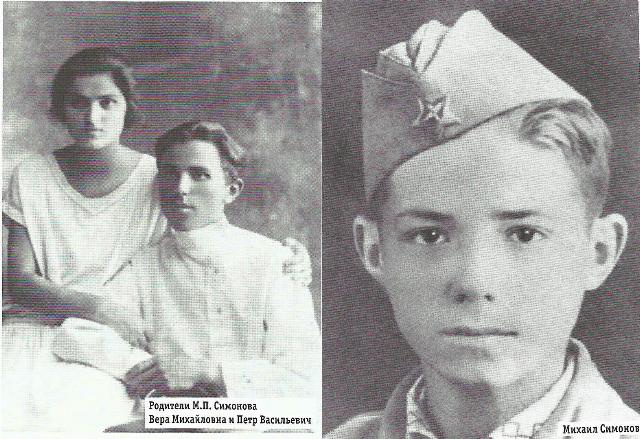 |
| Source: Valery Ageev |
Mikhail's father, Simonov Pyotr Vasilyevich, died in 1942 in the battles of Stalingrad. (That's why, many years later, the record-breaking Su-27 aircraft had the tail number P (Peter) - 42.) The family often moved. For several years they lived in the village of Bykovo near Moscow, where there was an airfield. It was there that Mikhail looked with interest at the planes on takeoff and landing. This is probably where his dream of heaven was born.
That's why he entered the Kazan Aviation Institute, taught there and headed the laboratory. In 1959, he initiated the creation of the Design Bureau of Sports Aviation at the KAI, where he was the chief designer and at the same time an instructor and a tow pilot. At that time, under the leadership of M. P. Simonov, the first all-metal record gliders KAI-11, KAI-12, KAI-14, KAI-17, KAI-19 were created in the USSR. Those who happened to work under the direct supervision of Mikhail Simonov noted his distinctive feature — the ability to make unexpected decisions, which at first seemed almost absurd, but in fact, as it turned out later, were of a fateful nature.
In the Sukhoi Design Bureau
In the late 1960s, Mikhail Simonov, who came to Moscow to solve a number of problematic work issues, came to the attention of Aviation Industry Minister P. V. Dementiev, and he played an important role in his future. In June 1969, Mikhail Simonov was appointed deputy chief designer of the Dolgoprudny Design Bureau of Automation, and literally eight months later, in a similar position, he fell under the wing of the brilliant designer Robert Bartini.
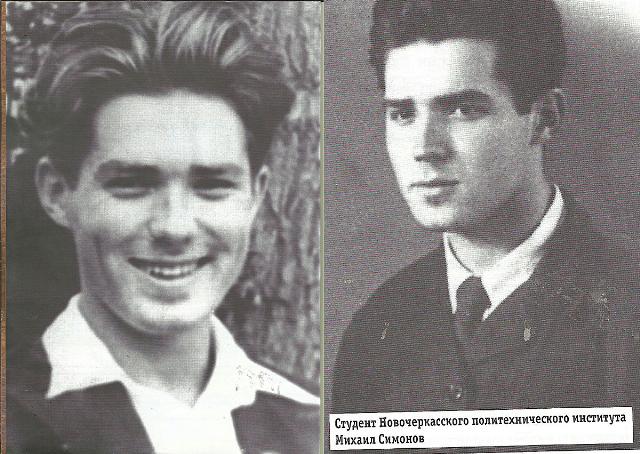 |
| Mikhail Petrovich Simonov. |
| Source: Valery Ageev |
An incomplete calendar year of apprenticeship with the "red baron" in many ways became the basis for the future general designer to form his conceptual and technical worldview. Many of Bartini's statements became a kind of beacon for Simonov in his future activities.
In 1970, he became Deputy chief designer at the Sukhoi Design Bureau and within nine years rose to the position of First Deputy General Designer.
Simonov at the Design Bureau began to test and fine-tune the Su-24 front-line bomber. The tests were a year and a half behind schedule. Minister P. V. Dementyev said: "If you manage, you will be a man! We need to catch up with deadlines and eliminate the backlog."
Simonov coped with this task, and quite successfully. Here is what was said in the award description for the designer: "Mikhail Simonov, as the head of the tests, proved himself to be an excellent organizer and a brilliant research scientist. His contribution to the creation, improvement and introduction into mass production and operation of the most complex combat aircraft complex Su-24 was marked by the award of the Lenin Prize in Science and Technology."
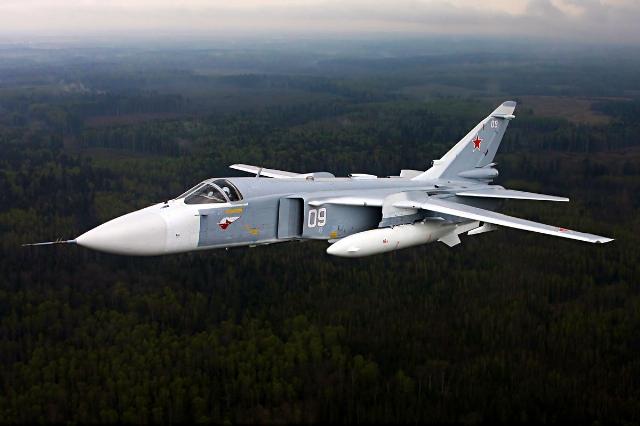 |
| Su-24. |
| Source: Valery Ageev |
In the West, the appearance of the Su-24 was assessed as follows: "Having excellent performance in terms of combat load — range, the aircraft is capable of flying in terrain following mode and striking, significantly surpassing other military aircraft of front-line aviation. The Su-24 has a significant impact on the military balance."
At that time, the Su-24 was the only multi-purpose attack aircraft performing tasks typical of a fighter-bomber, attack aircraft and a front-line bomber. The aircraft, terrible for the West, after comprehensive tests, was adopted by the Air Force in April 1975.
The epic of the Su-27
In the autumn of 1975, the founder of the Design Bureau, Pavel Osipovich Sukhoi, died, who managed to form a team of like—minded people capable of combining the latest achievements of science and technology with justified, comprehensively assessed technical risk when creating machines. Obviously, this is why many of the Design Bureau's developments received a very flattering characteristic in the aviation environment – aircraft that were ahead of their time.
His student E.A. Ivanov was appointed General Designer of the Design Bureau. He continued Pavel Osipovich's work with dignity. Under his leadership, a complex of flight, factory and state tests of Su-17, Su-24, Su-25, and the first modification of the Su-27 aircraft was carried out. It was during his time that the Design Bureau introduced a computer-aided design system for the first time in domestic aircraft manufacturing practice.
However, during the tests of the Su-27 fighter, four OKB test pilots were killed in disasters. And in this situation, it was decided to change the leadership of the Design Bureau. In January 1983, M.P. Simonov was appointed General Designer instead of Ivanov. Under his leadership, new modifications of the Su-27 were developed: combat training Su-27UB and Su-30, deck Su-33, shock Su-34, multifunctional Su-35.
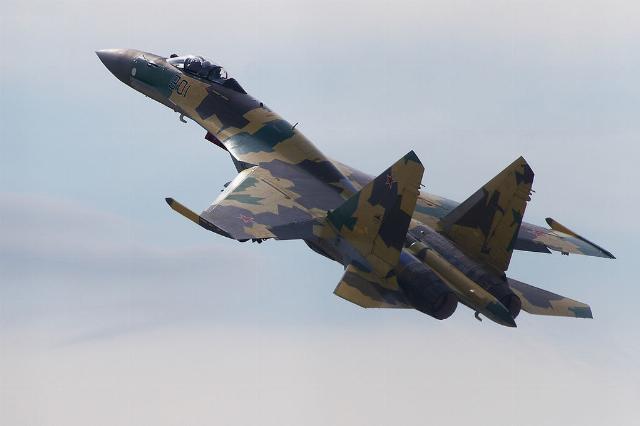 |
| Su-35. |
| Source: Valery Ageev |
The Su-27, which the Sukhoi Design Bureau has been working on since the late 1960s, was conceived as a response to the appearance of the F-15 fighter in the United States. However, as our aircraft approached testing and serial production, it became clear that the American designers, who were actively upgrading their aircraft, had achieved notable success. The F-15 acquired new qualities that made it more powerful than its first samples. Even the materials of the open press talked about this — in American magazines, for example, it was published that the F-15 increased the tank capacity, the number of missiles on the external suspension, etc.
M. P. Simonov understood that the requirements that the military issued when ordering the aircraft would become outdated in the first year or two. There have also been changes in the understanding of the confrontation: the ratio of 70/30 — the percentage of long-range missile battles to close ones, according to science, has changed to 30/70. Maneuverability became a priority.
The state of the project, if you solve the case thoroughly, and not "serve the number", agreeing to a satisfactory completion of the task, required "surgical intervention". The list of necessary changes for the already completed aircraft reached 21 points at M. P. Simonov.
In TsAGI, the idea of redesigning a ready-made fighter was treated, to put it mildly, coolly. Help came from far away — from Novosibirsk, where Mikhail Simonov's institute friend Stanislav Kashafutdinov worked, who was reputed to be one of the most competent aerodynamicists in SIBNIA. He agreed to calculate and blow out a new model of the aircraft brought to him by M. P. Simonov. The results of Novosibirsk research showed that the creators of the new Su are on the right track.
However, there is a legend that Kashafutdinov and SibNIA had nothing to do with it. At Simonov's request, the aerodynamics of the Su-27 were allegedly recalculated in the Mikoyan Design Bureau in the image and likeness of the MiG-29. Whether this was the case, history is silent, but the Su-27 fighter turned out to be unique.
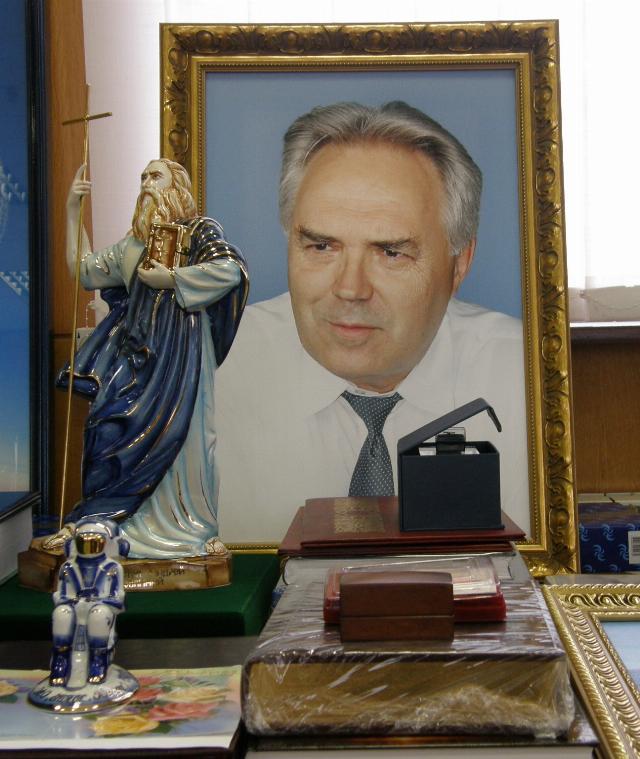 |
| Mikhail Petrovich Simonov. |
| Source: Valery Ageev |
That's what the Hero of the Soviet Union, Air Marshal Ivan Pstygo, said:
- Mikhail Petrovich, when creating the Su-27, was able to break through powerful rejection and opposition at various levels: in the Design Bureau, research institute, ministry, etc. They were all against the new project. During the introduction into mass production, when repeated changes to the design of the aircraft could disrupt the plans of the serial plant, the head of KnAAPO, the general director of this enterprise, Vladimir Nikolaevich Avramenko, provided invaluable assistance.
It is known that the first flight of the Su-27 aircraft was performed by the chief pilot of the Design Bureau Vladimir Ilyushin on May 20, 1977. The design bureau knew that the picture of the first rollout of the Su-27 at Zhukovsky airfield did not go unnoticed — an American spy satellite recorded the taxiing and takeoff of a new Soviet fighter, but now it was no longer scary: these were data on the old version of the Su-27.
On April 20, 1981, the same Vladimir Ilyushin lifted into the air a prototype of the Su-27 aircraft in a new version, which would later set a series of world aviation records.
The release of a new version of the Su-27 made a splash in the aviation world, and the State Award to the creators of the miracle machine deservedly crowned their success. To this day, this fighter continues to surprise specialists with new features, which are embodied in all new modifications.
Who is stronger: Su-27 or F-16?
The Su-27 is significantly superior to the American "aerodynamic benchmark" — the F-16 aircraft. The first attempts of the Norwegian Air Force F-16 to escort the Su-27 over the expanses of the Barents Sea turned out to be completely untenable. They were unable to maintain formation with the Su-27 flying in cruising mode. Due to the worst aerodynamics, the American aircraft lacks the afterburnerless thrust of the engine, and it lags sharply behind the Su-27. Turning on the afterburner leads to a sharp increase in fuel consumption. As a result, such jerky attempts to keep the formation end with rapid fuel production and disruption of the "target" escort.
The Su-27 is an outstanding fighter, unparalleled in maneuverability, range and combat effectiveness. Due to its excellent flight performance and operational characteristics, the aircraft is rightfully very popular with pilots and engineering staff. Everyone who has ever had a chance to lift the Su-27 into the air, notes the simplicity of its control: on the very first flight, the pilots do everything themselves almost without the intervention of an instructor. The demonstration of aerobatics on the Su-27 is always admired by the audience.
In the summer of 1992, the Su-27 flight, by agreement with the American side, landed at Langley Air Base, where the best US fighters are based.
After getting acquainted, our pilots offered to conduct a training dogfight. The Americans hesitated — to arrange a duel over the airfield in full view of journalists… The challenge was accepted on the condition that the fight would take place 200 km from the coast over the Atlantic Ocean.
The scheme of the training battle was developed quite simple. To begin with, the Su-27 had to stay on the "tail" of the F-15, then the planes had to switch places. The American F-15 tried to break away from our fighter at full afterburner, but it failed. At the minimum afterburner, the Su-27 easily "got" the American. Swapping places, the Su-27 immediately left the F-15 in a turn with a climb. After making several maneuvers, he joined the American in the "tail".
The F-15 pilot lost sight of our fighter. He helplessly turned on the radio to the pilot of the observer plane: "Where's the Flanker [the code name of the Su-27 according to the NATO classification]?" "He's after you," was the reply. All attempts by the American ace to break away ended in failure. Our pilot held him securely in the missile sight.
The American pilot was right when, seeing Viktor Pugachev making a cobra on the Su-27 in Le Bourget in 1989, he said: "If I meet this "bird" in battle, I will have to eject."
Engineer and scientist
The ability to take risks, the search for extraordinary solutions, and an amazing engineering flair have always distinguished the creative handwriting of designer Mikhail Simonov. Mikhail Petrovich formulated these views very clearly in his doctoral dissertation, where he derived his three main principles. First of all, if you are going to create an airplane, then it must be the best in the world. Secondly, all his decisions must be the best. And thirdly, if we have the best solutions, then we must have the determination and will to implement them.
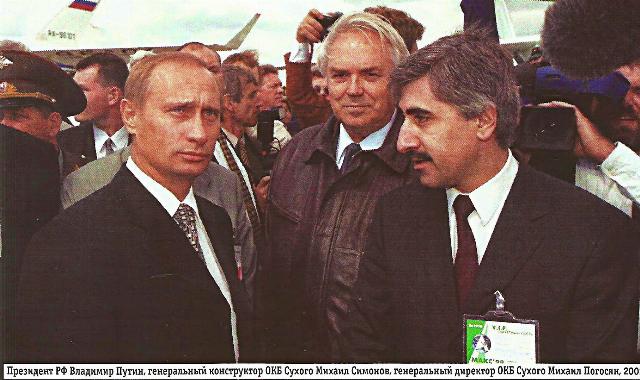 |
| V.V. Putin, M. P. Simonov, M.A. Poghosyan. |
| Source: Valery Ageev |
Simonov was not only a brilliant designer, but also a witty man. At one of the press conferences, he answered the question of a Western journalist about why the Sukhoi Design Bureau designs and builds fighters that surpass Western military aircraft in all characteristics.:
- It is pleasant and very interesting that the American press is interested in issues that are vital to us. However, I have to make one small remark. The Americans believe that we made the Su-24 at the time, competing with General Dynamics and their F-111 bomber. They are also convinced that we have built the Su-25 attack aircraft in contrast to your A-10. And in the case of the Su-27, there is nowhere to go at all — they competed with your F-15 Eagle…
All this is nonsense! These aircraft were created at the Sukhoi Design Bureau with a single goal - to win the competition ... MiG General Designer Rostislav Belyakov..."
In 1998, the general designer became a laureate of the Russian Government awards in the field of development and creation of new equipment. However, it is curious that M. P. Simonov was twice awarded the State Prize of the Russian Federation in the field of literature and art in the nomination "Technical Design" (in 1997 for the Su—27 aircraft and in 2003 for the Su-26 aircraft).
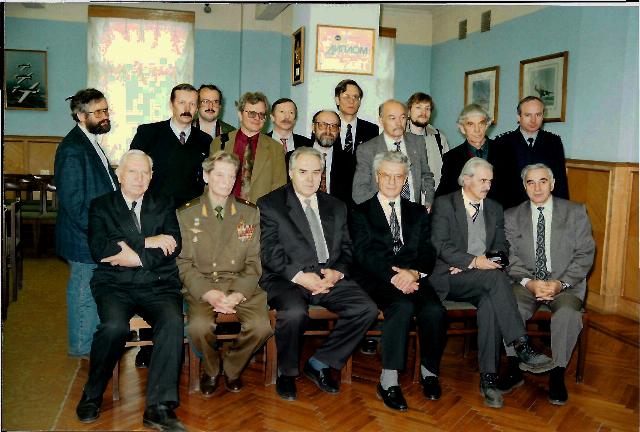 |
| M. P. Simonov with journalists. |
| Source: Valery Ageev |
The merits of M. P. Simonov, Doctor of Technical Sciences, academician of the Engineering Academy, in the development of world aviation are recognized not only in our country, but also abroad: on April 8, 1998, he was awarded the honorary title of "Man-Legend of the Aerospace Industry", his name is presented in the Gallery of Fame at the National Aviation and Space Museum in Washington.
The General Designer of the Sukhoi Design Bureau, M. P. Simonov, became a Hero of Russia, and this high title was awarded to him "for the courage and heroism shown in the creation and testing of modern aviation equipment."
Su-branded aircraft are operated in many countries of the globe, and interest in them is not decreasing. In August 2002, Russian President Vladimir Putin, interested in new developments, visited the Sukhoi Design Bureau. He even performed a flight on a Su-27UB aircraft. In 2009, another Russian president, Dmitry Medvedev, flew the newest Su-34 combat aircraft.
 |
| A commemorative plaque. |
| Source: Valery Ageev |
M. P. Simonov died of a serious illness on March 4, 2011 at the age of 81. He was buried at the Novodevichy cemetery. A memorial plaque was unveiled on the school building in the city of Kamensk-Shakhtinsky, Rostov region. The same board was installed in Moscow in Konakovsky Passage, where M. P. Simonov lived from 1988 to 2011, and in Kazan at the main entrance to the building of the Scientific and Production Association "Experimental Design Bureau named after M. P. Simonov". A monument to the designer was also erected there.
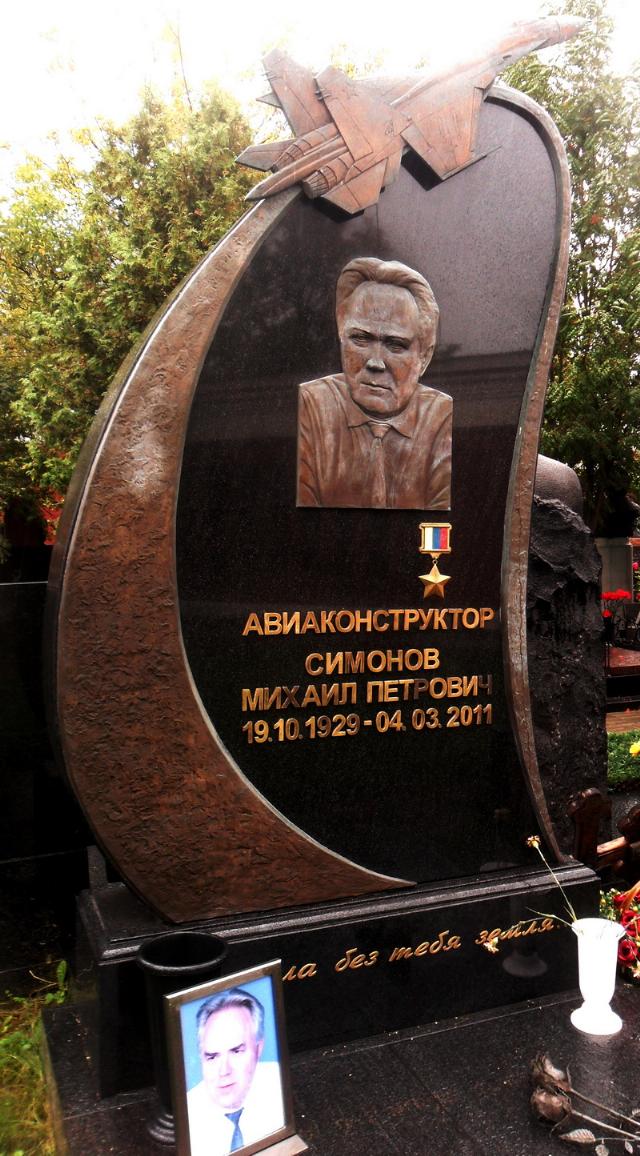 |
| The grave of M.P. Simonov. |
| Source: Valery Ageev |
Valery Ageev
